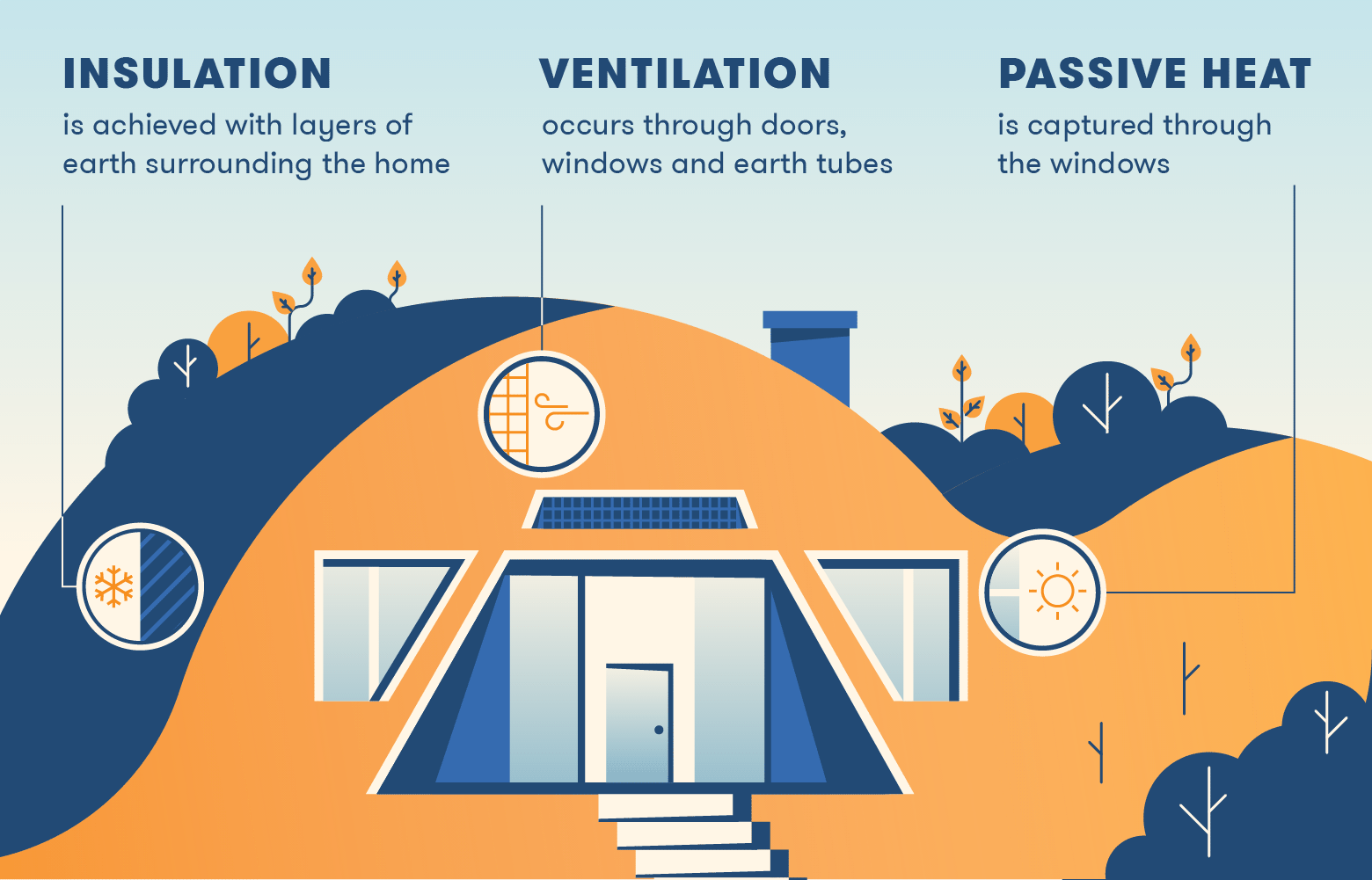Answers For VOL 4 Test 6 - Earth-sheltered Housing
Answers and detail explain for VOL 4 Test 6 - Earth-sheltered Housing
1.
low impact
2.
alternative
3.
life span | lifespan
4.
traffic
5.
ventilation systems
6.
conservation
7.
C
8.
B
9.
B
10.
A
Explain
VOL 4 Test 6 - Earth-sheltered Housing

0:00
0:00
Student: For my presentation on ecological environmental planning, I have chosen to talk about how underground housing, or earth-sheltered housing, as it's more commonly known, can meet the demands of ecological environmental planning, both in terms of building and energy resources and in terms of sensitivity to the landscape. 1Perhaps the greatest merit of this building technique is the low impact it has on the environment since houses built underground can hardly be seen from the surface.
If earth-sheltered homes are perfect for environmentally sensitive sites, they are also remarkably efficient when it comes to energy use. 2This is because this kind of housing makes greater use of alternative technologies to improve energy efficiency, as I shall explain in more detail later. Many earth-sheltered housing projects use natural, non-toxic resources for building materials, such as rammed earth, which are surprisingly durable.
3Some of these houses have a predicted life span of five hundred years or more. The extra protection offered by this type of housing means less exposure to the elements, which keeps maintenance to a minimum as there aren't any outside walls to paint or gutters to clear, for example. 4Living underground also brings the advantage of a quieter environment, eliminating disturbances caused by traffic, an enormous problem these days and one of the most common reasons for people to consider moving home.
And lastly, despite misconception that underground houses must be very damp, earth-sheltered housing offers significant health advantages. 5The sophistication of the ventilation systems installed in earth-sheltered houses brings enormous benefits to people suffering from asthma and other chest conditions.
I'd like now to turn to the situation in the UK where, despite all the obvious advantages, earth-sheltered housing still isn't a popular option for most homeowners as the statistics prove. The British Earth Sheltering Association says that people shouldn't be put off by fears of too much red tape as it is getting easier to get planning permission. 6There is quite a lot of evidence that building development officers are more sympathetic to earth-sheltered projects, especially in conservation areas.
Special consideration has been given to several underground homes on sites where conventional development would not normally be allowed. And there are hopes that one day, Britain's coastline will no longer be dominated by mobile homes, and instead, the job of providing this type of accommodation will be done by earth-sheltered housing.
I'd like to finish by looking at two quite different projects, Mole Manor and the Hockerton Project. 7When it was first built, Mole Manor generated international media interest and was voted one of the 12 most desirable places to live in the world in a national newspaper poll. Hockerton also attracted wide publicity, winning several awards for its innovative environmental design.
As is the case for all earth-sheltered homes, running costs at Mole Manor are substantially lower than for conventional homes. Because of its effective insulation, its heating bills are approximately 75% lower than for conventional houses.
8However, at Hockerton, solar energy, wind power, and rain are used to generate enough warmth, electricity for light and cooking, and water for washing and drinking for all the needs of the five families who live there. Their aim of living a holistic lifestyle in harmony with the environment has been realized. 9Hockerton also proves that earth-sheltered houses can be built on a modest budget. Each of the families contributed £80,000, the cost of an average family house in this area.
Style rather than cost was more of an issue in the design of Mole Manor. 10The homely terraced cottage style at Hockerton contrasts with the grandeur and space of Mole Manor, which today is worth over £800,000.
What projects like Mole Manor and Hockerton demonstrate is that earth-sheltered housing can provide comfortable, stylish, eco-friendly homes for a diverse range of needs. The combination of architecturally sensitive designs with new energy-saving technology satisfies all the criteria for ecological environmental planning.
Question 1-6
Complete the sentences below. Write NO MORE THAN TWO WORDS for each answer.
Advantages:
-
has a 1 (low impact) on the environment
-
increased use of energy-efficient 2 (alternative) technologies
-
can have a very long 3 (life span | lifespan)
-
easy to maintain
-
no noise from the 4 (traffic) outside (big problem in many conventional homes)
-
health benefits from advanced methods of 5 (ventilation systems)
Earth-sheltered housing in the UK:
-
no longer difficult to get planning permission
-
more likely to get approval for development in 6 (conservation) areas
-
may replace mobile homes on the coast
Questions 7-10
Which UK projects have the following features?
Choose the correct answer.
|
A Mole Manor B The Hockerton Project C both Mole Manor and the Hockerton Project |
7
7
Favourable reaction
Correct answer: C
8
8
Self-sufficiency in energy
Correct answer: B
9
9
Low building costs
Correct answer: B
10
10
Luxurious accommodation
Correct answer: A
![[Forecast Q2-2025] - Biology lecture](https://static.helik.app/reading/8fd3d7d2-ccf9-47a3-8920-2e7a3b0d6607)
![[Forecast Q2-2025] - Living in the City](https://static.helik.app/reading/1a60bcf3-f3a7-4e9b-97a2-94d156a0de3b)
![[Forecast Q2-2025] - Student Union](https://static.helik.app/reading/fb443123-8c1d-447e-8c79-5a01650f4754)
![[Forecast Q2-2025] - Fruit-picking Job in an Orchard](https://static.helik.app/reading/e1968346-6c55-44ae-b8d3-f6a4fb7207b9)
![[Forecast Q2-2025] - University Crime Prevention](https://static.helik.app/reading/bdda593e-16d6-4c72-8a12-b116e917b27c)
![[Forecast Q2-2025] - Business Course](https://static.helik.app/reading/3308e282-99a6-4bcb-9d22-0b488701d968)
![[C20T1] - Choosing a restaurant](https://static.helik.app/reading/e9b21123-c43c-42fb-88b7-5d0be3a37e03)
